
Ever realize how May seems to sneak up on you? You spend months building a classroom community. Then, suddenly, it is time to wave goodbye and pack up the classroom!
Students leave, and you’re filled with such a mix of emotions. First, you’re so sad to see them go. Then, a wave of excitement comes over you. And, finally, the daunting realization: it’s time to pack up.
Years ago, classroom pack-up intimidated me. After all, I had just spent months cultivating a reliable, organized system for my classroom. Now, it’s time to put it all away?!
But, over the years, I’ve developed five steps to packing up my classroom quickly. To keep my brain sane, I found it best to be proactive and think about what would help me when the next school year rolls around. In addition to investing in many large plastic bins and supply organizers, I’ve developed systems that make packing up quick and back-to-school unpacking even quicker.
Tip #1: The First Week of School Bin
Here’s my number one piece of advice: Start packing up your classroom by creating a “first week of school bin.”
I know. I know. “But, Jillian, the school year just ended! You’re saying I should already know what I’m doing the first week of school?!”
Yes. And…no.
The hard and fast truth is that you never know how much time you’ll have to get ready during those final weeks of summer. There have been years (ok, most years) when I haven’t been able to enter my classroom until the eleventh hour. That has left me scrambling to get the basics ready for my students to enter the classroom.
It is essential to have a few boxes marked and ready for the first week. So, don’t start planning just yet. Instead, think about the basic supplies you might need or want.
So, what are the basics? What should you pack up for the first week in your classroom? Think back to what you used most this past year.
Here are a few items that make their way into my first week of school bins:
- Supplies (Think: Pencils, Markers, Color Pencils, Paper)
- Back-to-School Read Alouds
- Word walls and anchor charts
- Classroom labels and supplies for labeling names
Tip #2: Pack Up by Classroom Zone
Are you staying in the same classroom? If yes, lucky you! That will make unpacking your classroom so much easier. Unfortunately, that isn’t the case for many of us.
Even when I continued teaching the same grade, I would often move to a new classroom. That said, you might not know the specifics of your classroom. But that’s ok! I figured out a solution.
Think about your classroom in learning or activity zones. For me, zones are general spaces you dedicate to a specific subject, activity, or storage. A zone might house a particular material or highlight a specific subject’s word wall.
In my classroom, some zones include the math area, the literacy area, the library, and my teacher’s desk and shelves.
The trick with zones is to structure them exactly around your specific classroom space. Here are some of the items I’ve organized by zone:
- Math Area Zone(s)
- Manipulatives and tools
- Word wall
- Binders
- Meeting Area Zone
- Seating
- Wall for Calendars and Counters
- General lesson supplies
- Literacy Area Zone(s)
- Tools (ex: line makers and finders)
- Supplies (ex: extra pencils, erasers, etc.)
- Word Wall + Anchor Charts
- Tools for instruction and literacy center small groups
- Organized literacy center stations (pre-prepped versions, not extra copies- see below)
- Teacher Zone
- Supplies for your teacher’s desk/space
- Personal supplies (ex: extra cords and chargers)
- Teacher books (ex: curriculum or PD reference guides)
- Student Zone
- Labels for cubbies
- Extra binders
- Library
- Chapter Books
- Picture Books
- Graphic Novels
- Read Alouds
- Extras
Tip #3: Pack Up with Classroom Organization in Mind
While packing up by classroom zone will help you systematically unpack, HOW you pack is equally important.
Picture this: It is a week before school begins. You take out your bins and open up the lid to find… a mess of papers and supplies thrown together!
Now erase that disheartening image. Imagine this instead: You open up each bin to find your materials ready-to-go, or at least, neatly stacked. *Cue sigh of relief*
As I go through my room, packing by zone, I try to keep my classroom organization in mind. I keep the organizational systems I’ve built over the year. For example, my math zone is packed in the containers I use all year long. Math manipulatives stay in their boxes with labels. But, they are tucked into a larger bin to be stored together.
Likewise, larger organizational systems can be packed on their own. Rolling paper and supply caddies, as well as multi-drawer storage units, can be tucked away without any additional packing or unpacking.
Organizational Trick for Word Walls
When it is time to pack up word walls, it is tempting just to throw them into a bin. “I’ll organize them in August,” is a phrase I said too many times. Then, I realized how much simpler my life would be if I were proactive. Now, I systematically take my word walls down and store them by unit.
Tip #4: Label Everything!
I’ve said it before, and I will say it again. Labels save time.
Why is labeling so important?
Think about how helpful they are during the school year. In your classroom, labels help you and your students quickly identify where to find supplies. Additionally, labels help you know exactly where to put something once you’re done.
If you carefully pack your classroom with labels, they take out the guesswork of unpacking. When it comes time to unpack, labels help you systematically unpack and organize your classroom.
So, what kinds of labels should you include? Here are some examples:
- Classroom Zones
- Supplies
- Books (read alouds, by genre, by level)
- Math manipulatives
- Specific units or subjects
Tip #5: Clear the Clutter As You Go!
Freeze! Put down those extra copies. Step away from the dried-out glue sticks. Don’t be fooled. Not everything in your classroom needs to be stored.
Learn to let go of extras
This is one hard realization I’ve had over the years. Saving things that don’t fully serve their purpose only makes your job harder. That’s where clearing the clutter as you pack your classroom comes in.
Check everything as you pack up your classroom zones. Then, get rid of anything that isn’t 100% ready for the new school year. For example, supply containers may be filled with unusable materials.
Teachers often develop a “keep-it-all” mindset because supplies can be limited. However, extra copies usually stay extra copies. That is, you won’t use them. They take up space in your storage and make unpacking in August less streamlined.
The end of the school year is a fantastic time to reflect. Likewise, packing your classroom one section at a time can help you process all of the amazing learning that took place. I hope these five tips for classroom pack up help you streamline a sometimes daunting process. Let me know how they help and if you have your own tips and tricks to share!

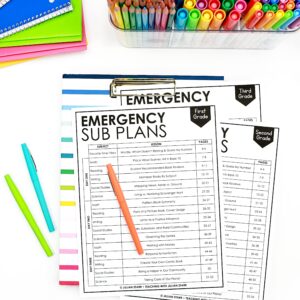

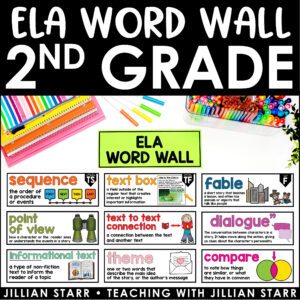
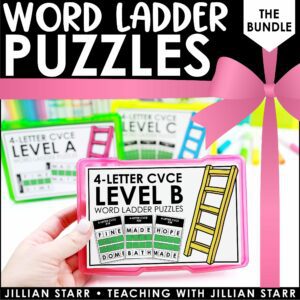
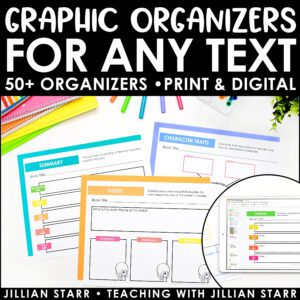
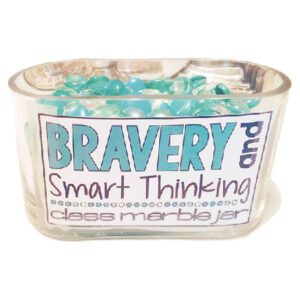

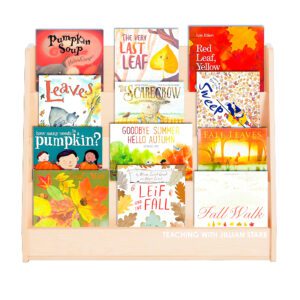


Leave a Comment